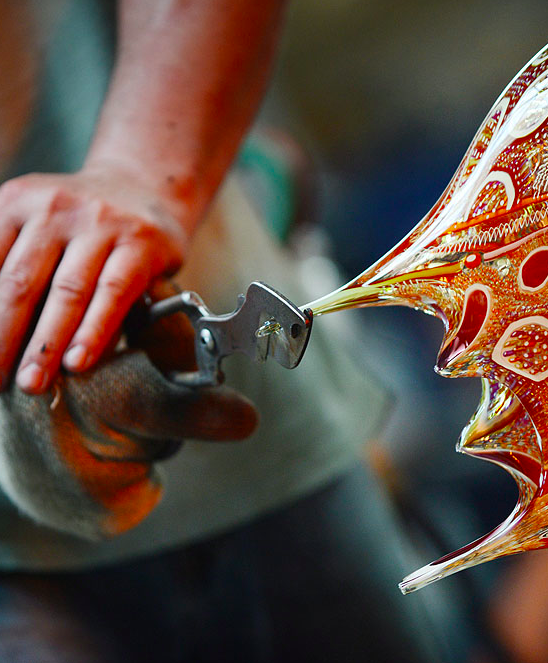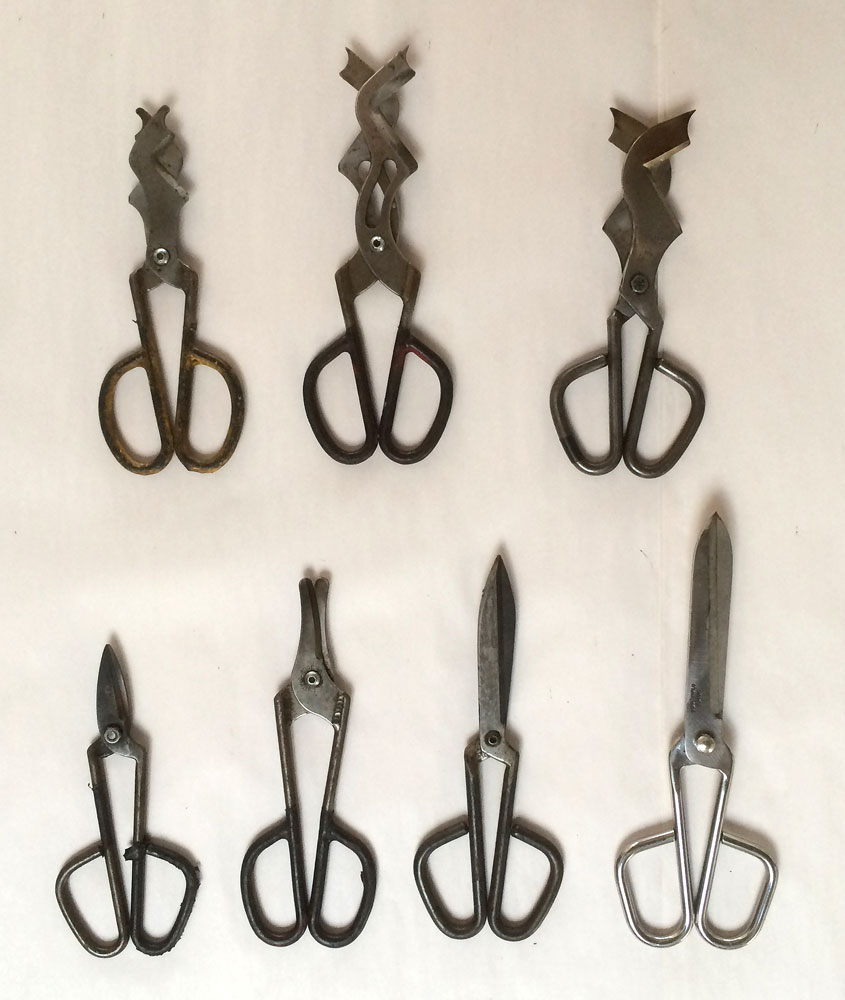Tools of the Trade

I don't know what it is with glassblowers, but most of us have a special affinity for tools. Maybe it's the fact that we can't really touch our material of choice, so more than for other artists/craftspeople, tools are a critical extension of our hands. While the types of tools are fairly universal throughout the glass world, most of these tools are handmade and vary a bit in design. Individual preferences abound, so what feels good in someone else's hands might not work for me and vice versa. This subjective 'feel' between tools, inspires many of us to explore different tools until we find the ones that feel best to each of us.
This winter I decided to do a general re-alignment of my tools; buying new ones that I thought might make my life easier, making some that I've been procrastinating on and selling ones that I don't find useful in my work. Here's some of what's in my tool locker, organized by type. Some of these are new additions, some are going to find new homes.
Jacks (from left to right):
Jacks look like tweezers, but they're completely different. Used mostly for shaping and creasing the glass, jacks have blades that run on the surface of the glass rather than grab it with the tips. They can be used in parallel to the axis of the piece on the inside to widen or round out an opening (like a cup) or on the outside to smooth or shape a form. They are often used to 'neck' a piece--which creates a narrowing and crease near the blowpipe where the glass will eventually be broken off. Metal jack blades are coated with bees wax to help them smoothly slide across the surface of the glass and re-coated after the wax burns off. Since anything that touches the glass acts as a heat sink, small and thin jack blades are ideal for working things that are small and thin since they don't cool the glass as quickly. Large jacks are good for large work where the glass is being squeezed harder, you need to keep your hands further away and the added heat sink isn't a major consideration.
- Carlo Dona insanely massive - for necking absurdly large work, scaring small children and burglers. I've not yet used them.
- Carlo Dona large - for necking everyday large work
- Ajeto large - for necking everyday large work, purchased to try new tools designed by Petr and Ondrej Novotny (since sold)
- Dino Tedechi large - for necking medium/large work
- Maruko medium/oval blades - for medium/large work that needs beefy stable jacks
- Maruko medium/regular blades - regular multipurpose jacks for doing most everything with small to medium work
- Maruko cup jacks (not shown) - perfect for thin light work like cane cups
- Jim Moore small (which I reprofiled to cup blades) - for making small things like cups
- Toensing graphite parcioffis - for shaping with minimum tool marks
- Jim Moore parcioffis - for shaping with minimum tool marks but requires them to be used wet
Tweezers (L to R):
Tweezers are mostly used for what you'd expect--grabbing and moving hot glass. But they can also be used for sculpting, picking a bubble open, rounding out a hole to switch an axis, scoring or cooling the glass, thinning out a lip, making divots that will trap bubbles on a subsequent gather and much more.
- Carlo Dona tiny - for fine goblet work (I don't do goblets, so sold these)
- Carlo Dona small - good for goblets and cups
- Carlo Dona medium - general purpose, great points for picking bubbles open
- Jim Moore - general purpose
- Dino Tedeshi large - general purpose (since sold these)
- Carlo Dona large - general purpose, (since sold these)
- Jim Moore custom large - I used this pair for closing large cane and murrine pickups but sold them to upgrade to the larger CD pair below.
- Jim Moore custom large
- Carlo Dona custom massive - what I use for closing large cane and murrine pickups.
- Carlo Dona custom massive
- Maruko Large, soft tension, beaked point (not shown) - my everyday general purpose go-to tweezers.
Diamond Shears (top L to R)
Diamond shears have four cutting blades and are designed to grab the glass, draw the glass to the very center and cut it off if from all four sides leaving a very small cut mark if used quickly. If you use it more slowly or on cooler molten glass, you can pull and push the glass as you desire and/or score the glass to break it once it's solidified. Diamond shears are very specialized but used very frequently.
- Cutting Edge Dante - general purpose fine work where you don't want to cool the glass much, lightweight and sharp
- Cutting Edge Large Combos - general purpose larger work but cools the glass a bit more since they're heavier duty
- Jim Moore Large - general purpose and since they're duller, I use these mostly for pulling glass rather than cutting such as making Bloom (since I need to have shears in each hand) or I for pulling murrine.
- Maruko med large (not shown) - great general purpose diamonds with a nimble feel and crazy sharp blades
Straight Shears (bottom L to R)
Straight shears are similar to heavy-duty scissors and cut glass in the same manner--two blades that shear the glass. Of course the glass needs to be hot in order to cut through it and you need to cut quickly so you're completed before the glass solidifies. It leaves a longer straight cut mark on the glass so not always ideal for all tasks.
- Jim Moore Trim - good for small general purpose like trimming a lip on a cup
- Cutting Edge Duckbills - excellent for trimming lips on medium and larger work like Foglios and Bloom.
- Jim Moore D2 Casting - great for cutting undesirable inclusions like bubbles out of a hot gather of glass.
- Carlo Dona huge - also great for pulling and cutting inclusions out of a hot gather and keeping your hand even further away.
I've made quite a few tools as well--pictures of those are here.




Comments
So your selling some of the
So your selling some of the Jack's?
Im in need of a medium pair of them taylor.apking@yahoo.com